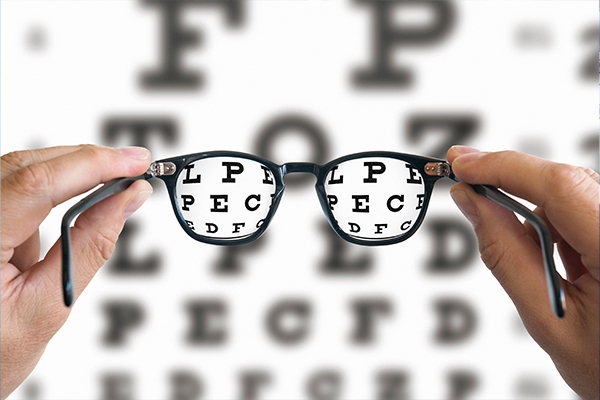Seeing Clearly: Reporting That Shows You the Full Picture

Article Highlights:
- Are your reports showing you the full picture?
- Without the right tool, you might not even realize what you’re missing.
It’s funny, the way your world opens up after you visit the eye doctor for the first time and learn you need glasses. I’ve been wearing them since third grade and still remember being amazed at the difference they made when I first tried them on. I could actually see individual leaves on trees; they were no longer the big green blobs I thought they were. But until that first appointment, I had no idea how much I was missing.
The same might be true of your reporting setup. Without realizing it, you could be operating with an unclear, incomplete picture of your business. Fortunately, you don’t need a prescription to bring your data into focus.
The Confusion of Multiple Tools
One of the questions asked in a routine eye exam is if you experience double vision. Seeing double creates a confusing and duplicated view of what you’re looking at, just like your view when pulling data from multiple tools.
According to Oracle, 32 percent of business leaders are overwhelmed by analyzing data from so many sources. When using multiple reporting tools, you’re opening doors to conflicting data, duplicate efforts, and potential misinterpretation of key metrics. This culminates in a loss of resources: energy is wasted digging for the truth, money is lost following misguided paths, and opportunities are missed waiting for a final decision.
With a centralized view of variable, fixed, and overall store summaries in a single dashboard, you won’t have to worry about seeing double. Instead, you’ll have a reporting tool that gives you quick and easy access to the data you need to make business decisions.
Only Seeing What’s Right in Front of You
Another common vision issue is nearsightedness – seeing nearby objects clearly while distant ones appear blurry. It’s being able to read the menu in your hands but not the game’s score on the TV across the restaurant. In business, nearsightedness means focusing on immediate numbers without the ability to predict and plan for the future.
Maybe you’re relying on spreadsheets or static reports to track daily, weekly, or monthly performance. While this helps you analyze current operations, it hinders your ability to predict future trends.
If you can’t see your progress (or lack thereof) toward year-end goals, how do you determine your priorities? It might take longer to realize your numbers are down for the month, leading to missed opportunities to correct courses, optimize operations, and drive growth. Without forward-looking insights, you risk reacting too late – turning small setbacks into bigger challenges.
Take the weather as an example. If you’re anything like me, you check a weather app each morning to decide if you need a jacket, an umbrella, or to adjust your plans for the day. These tools use predictive analytics to help us make smarter, faster decisions.
Viewing accurate and timely forecasts (the business reporting kind) lets you anticipate future profits and losses across the dealership, strengthening your long-term vision and moving you from a state of reactivity to one of proactivity.
Only Seeing What’s Far Ahead
On the other hand, farsightedness affects the ability to see nearby objects. While you’re able to forecast and prioritize long-term goals, you may be missing the immediate inefficiencies in front of you.
Planning for the future is important, but failing to catch cash flow gaps, profit leaks, or operational inefficiencies in real time can hurt your bottom line. These blind spots can add up, impacting profitability and overall business performance.
What would it mean, for instance, if you had a clear picture of contracts-in-transit, seeing which lenders fund the fastest and which F&I managers are not utilizing them?
Having an easy-to-read dashboard with real-time data gathered across departments and stores allows you to make decisions based on the full picture, not just partial information.
Seeing Clearly with the Right Reporting Tool
Like putting on the right pair of glasses, a robust reporting tool sharpens your vision. Instead of green blobs, you see branches and buds – the details that help you make informed, strategic decisions.
So how do you get there? By utilizing a single reporting solution that shows current operations in real-time while also giving you the ability to forecast, eliminating the blind spots.
It’s recommended to see an eye doctor every two years. Have you evaluated your reporting setup in that timeframe? If not, it might be time for a vision check.
Related Articles:

Quarterbacking Your Deals: The Strategic Advantage of eContracting
As the college football season approaches, dealerships can gain valuable insights from the strategic capabilities of college football teams. Just as quarterbacks must think on…

Beware and Prepare: What You Can Learn from the “Ides of…
For Julius Caesar, listening to a warning was a matter of life or death. When it comes to keeping your business healthy and profitable, staying…

Sleighing the Reporting Game: Digitizing Your Business Office
The enchantment of the holiday season is undeniable. As the living room fireplace crackles with life, its warmth greets you with a cozy embrace. Fresh…
Mastering Customer Communications: The Power of Call Tracking
In the competitive world of automotive retailing, establishing effective communications with customers is paramount to building strong relationships and driving sales. Many dealerships and OEMs…















